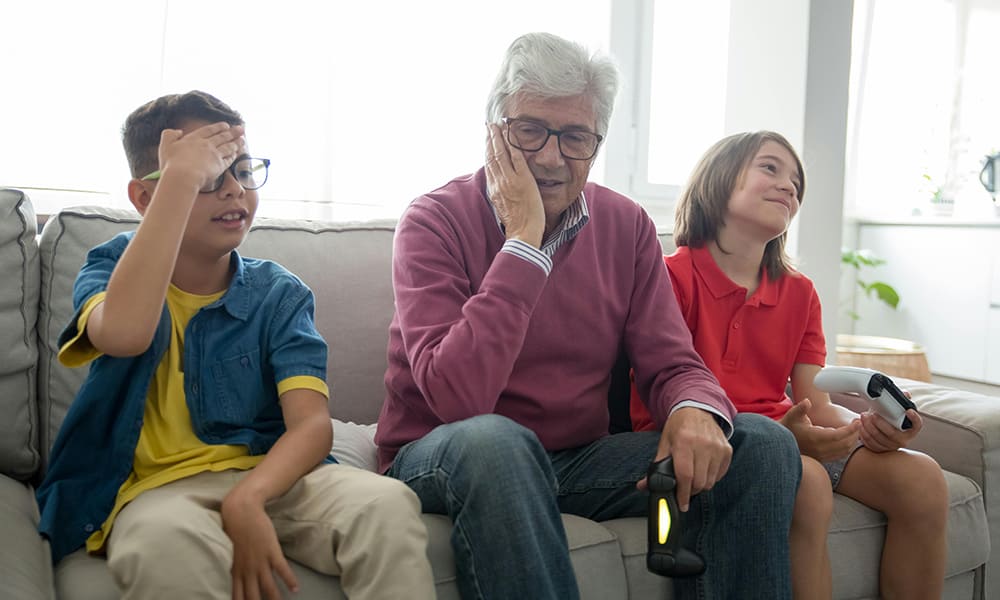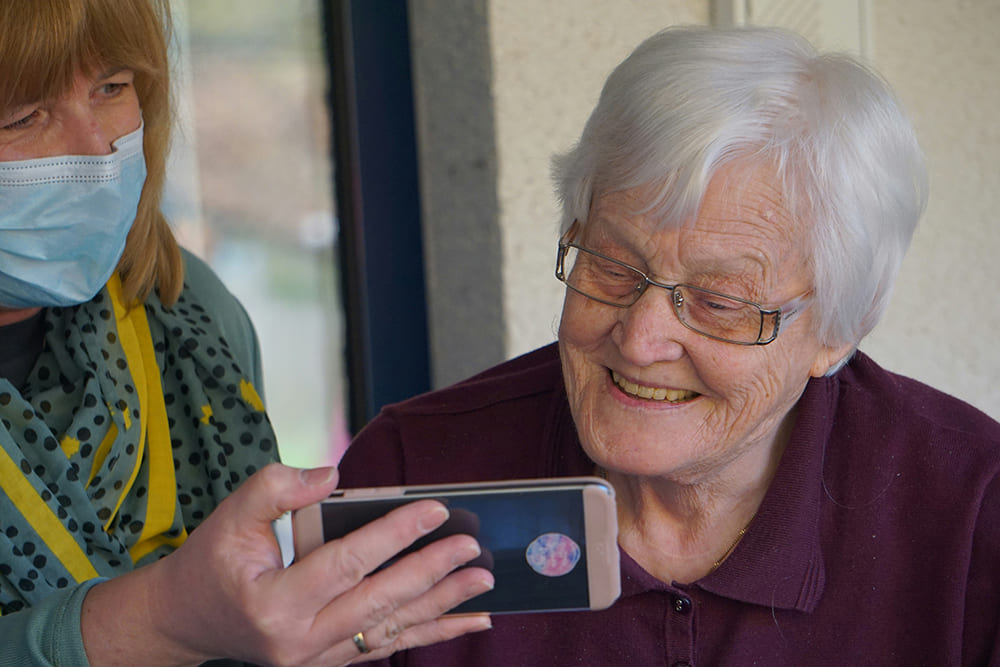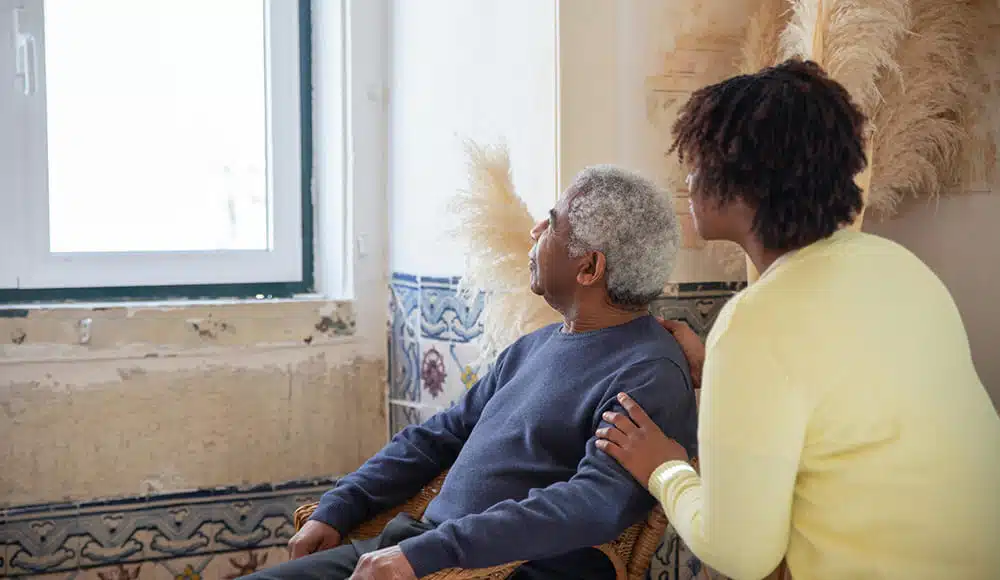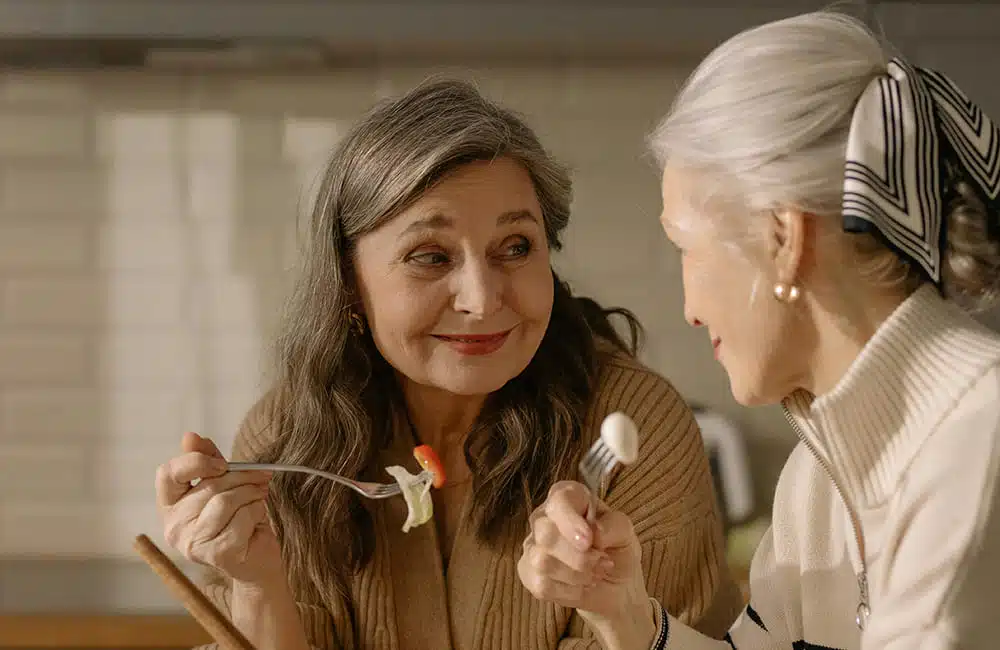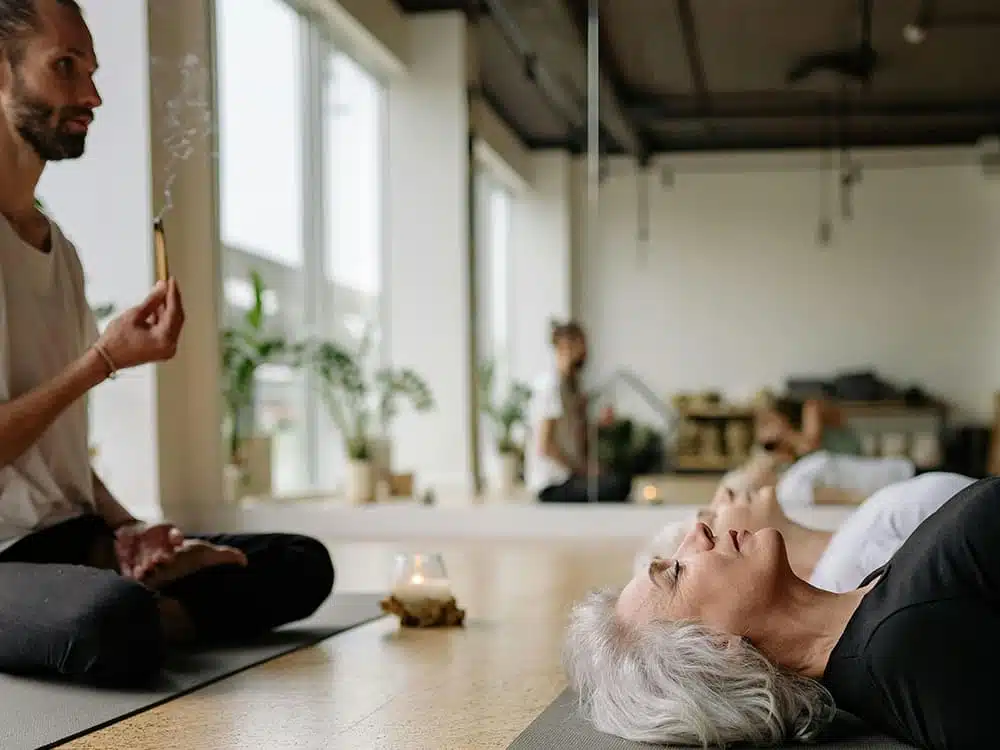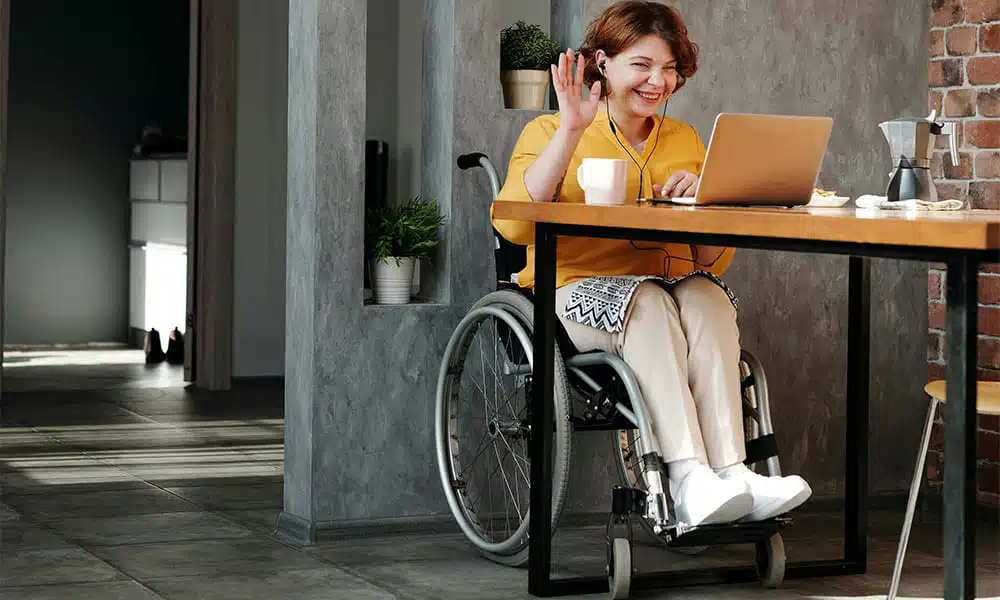Living with dementia can present challenges with daily activities. Occupational therapy (OT) steps in to empower individuals with dementia. This guide explores the goals of OT, the interventions used, and the resulting benefits for a better quality of life.

Christopher Ravn
Key Takeaways
1. Dementia occupational therapy is designed to assist dementia patients in enhancing their quality of life, independence, and daily functioning.
2. Occupational therapy can help people with dementia and their caregivers by creating personalized plans that suit the patient's needs, abilities, and goals.
3. It is important to ensure regular monitoring so that the current assessment can be adjusted to ensure optimal outcomes. Thus, it is important to track progress and identify additional needs so that therapists can formulate decisions and refine their approach.
Table of Contents
1. What Is Dementia Occupational Therapy?
2. How Is Occupational Therapy Assessment Conducted For Dementia?
3. What Are Common Occupational Therapy Interventions For Dementia?
4. Does Occupational Therapy Help With Alzheimer’s And Memory Care?
5. How Can Therapy Partners Assist In Dementia Care?
6. What Are The Latest Studies On Occupational Therapy For Dementia?
7. Frequently Asked Questions About Dementia Occupational Therapy
What Is Dementia Occupational Therapy?
Dementia occupational therapy is designed to assist dementia patients in enhancing their quality of life, independence, and daily functioning. Thus, occupational therapists work with patients to create techniques to handle issues such as memory loss, communication, and daily activities.
- Identifying the patients’ strengths
- Developing strategies to handle cognitive and physical issues
- Educating patients and caregivers in effectively dealing with daily activities
- Providing support to caregivers to manage patient care
The main benefits of dementia occupational therapy are that it helps patients handle activities such as bathing, cooking, and dressing, improves participation in activities, maintains social connections, and reduces the stress and burden on physical caregivers.
The various aspects of occupational therapy are physical intervention through exercises, cognitive interventions to handle memory loss, solve problems, and social interventions to assist in maintaining connections and relationships.
How Can Occupational Therapy Help People With Dementia?
Occupational therapy can help people with dementia and their caregivers by creating personalized plans that suit the patient’s needs, abilities, and goals. The therapy session focuses on determining a patient’s limitations, strengths, preferences, medical history, and lifestyle choices. Thus, it helps provide a plan to manage behavioral symptoms and enhance overall well-being.
Occupational therapists modify activities for dementia patients by breaking down tasks into small steps or using other means to enhance daily life and make it accessible. A therapist may use walking aids to assist dementia patients in improving their mobility. They will also teach the caregiver or educate them on how to bathe or dress a dementia patient.
By remodeling the living space, occupational therapists can provide additional safety and independence to dementia patients. This may involve removing clutter and hazards, improving lighting, adding safety features such as grip bars, or non-slip mats, providing a calm environment using music, art, or aromatherapy.
How Is Occupational Therapy Assessment Conducted For Dementia?
- Step 1: A mini-mental state examination (MMSE), Montreal Cognitive Assessment (MoCA), or other cognitive assessments are used to screen to determine a dementia patient’s cognitive and functional abilities.
- Step 2: Functional Independence Measure (FIM), Kitchen Task Assessment, Performance Assessment of Self-Care Skills (PASS), and Canadian Occupational Performance Measure (COPM) are used to measure the patient’s performance in activities of daily living (ADLs) such as grooming, bathing, dressing, or toileting, or whether they can manage medications, cook, clean, or look into their finances.
- Step 3: Trail-making test, a Wisconsin card sorting test, or other cognitive assessment is used to assess the patient’s attention, concentration, memory, language, and even problem-solving skills.
- Step 4: The Home Safety Assessment Tool (HSAT) is used to conduct an environmental assessment to identify hazards.
- Step 5: Goal-setting tools are used to set realistic and measurable goals to enhance daily functioning and independence.
- Step 6: Treatment plans are used to develop a plan to address any needs and goals.
- Step 7: Cognitive functional assessments or caregiver feedback are used to assess the patient’s progress and make changes if needed.
Regular Monitoring
It is important to ensure regular monitoring so that the current assessment can be adjusted to ensure optimal outcomes. Thus, it is important to track progress and identify additional needs so that therapists can generate decisions and refine their approach.
There are a few techniques that can be used to track progress and identify any needs, such as using the Treatment Progress Indication (TPI), monitoring client progress, using standardized progress measures, and monitoring CAHPS scores to ensure progress. By regularly monitoring, therapists may define needs and adjust treatment plans by utilizing feedback, assessing problems and suggestions through the PDSA cycle, and conducting regular assessments of patients’.
What Are Common Occupational Therapy Interventions For Dementia?
- Using memory aids with dementia patients to enhance specific skills such as grooming and dressing.
- Assist dementia patients in finding accommodations that use aids such as grab bars and shower chairs.
- Educate caregivers to help dementia patients manage their behavior and promote autonomy.
- Improve communication skills by using simple language and encouraging communication through gestures, non-verbal cues, and facial expressions.
- Renovate or modify the environment to ensure safety and functional living space to promote independence.
- Using memory books, creating routines, and relaxation techniques to help dementia patients cope with daily challenges and solve problems.
- Educate dementia patients on how to use technology to manage finances and enhance daily living.
Cognitive Rehabilitation
- Memory aids such as crossword puzzles and memory cards may help to enhance short-term memory.
- Jigsaw and number puzzles like Sudoku may help improve cognitive function by getting the patient to solve problems, use abstract thinking, and persevere.
- Problem-solving tasks such as Q-bitz use a mixture of problem-solving skills, dexterity, and abstract thinking to improve cognitive function.
Physical Activities
- Brisk walking, jogging, cycling or swimming may improve cardiovascular health and increase stamina
- Weightlifting, resistance training, or push-ups and squats can build muscle strength
- Single-leg squads, tai chi, or balance boards may improve balance and coordination.
- Yoga, stretching, and pilates may improve flexibility.
- Adjust exercise intensity and volume based on the patients fitness level
- Select exercises that do not require excessive movement
- Use equipment, such as canes or walkers, to help strengthen any performance issues
- Work on exercises that resemble daily activities, such as lunges, squats, and step-ups.

Sensory Stimulation
- Tactile stimulation, such as gentle touch, pressure, or vibrations on skin, such as stroking or massage.
- Auditory stimulation, like using sounds or music by listening to white noise, calming music, or nature sounds.
- Visual stimulation involves light, colors, or patterns, such as watching the sunset or a beautiful landscape.
- Olfactory stimulation by using smells or scents such as essential oils, cooking, or perfumes.
- Gastrointestinal stimulation like eating favorite foods, drinking favorite drinks, or eating treats.
We Believe Prioritizing Brain Health Enhances Your Quality Of Life
Get to know our team, our mission and how our EVY LIGHT® can provide you and your loved ones with a fuller life, letting you breathe a little easier.
Does Occupational Therapy Help With Alzheimer’s And Memory Care?
Occupational therapy is important to help with Alzheimer’s, memory care, and other forms of dementia. It provides patients with avenues to achieve independence, perform their daily chores, and help manage their symptoms. Occupational therapy also assists in reducing behavioral problems such as agitation, aggression, and wandering. It also helps to lower caregiver burden by educating them on ways to manage their loved ones with emotional support. By utilizing brain exercises to prevent Alzheimer’s, one may improve daily living activities such as bathing and dressing, thus boosting independence.
Memory Techniques
There are a few memory techniques that may be utilized to improve memory and retention in Alzheimer’s and memory care. By using memory books such as memory journals, patients can note ideas and concepts that may help stir their long-term memory. Visual aids such as flowcharts and mind maps can be used to enhance memory and retention, thus making it accessible and easy for patients to retain or recall any information when needed. To add on, by having a daily routine, patients can focus on their tasks each day by recalling information or engaging in other memory-related activities.
Studies have shown that these techniques may assist in improving memory and by using spaced retention, patients may improve memory retention by about 50%. A study published in the Journal of Experimental Psychology has shown that by using memory books, patients were able to improve their retention compared to those who did not use a memory book or any visual aids.
Cognitive Exercises
- Mnemonic techniques such as using acronyms, associations, and mind maps to remember.
- Memory palaces use familiar places, such as your home, objects, or locations to recall information.
- Acronyms and acrostics make remembering easy.
- Using crossword puzzles to improve memory and cognitive function
- Completing jigsaw puzzles to enhance spatial memory and cognitive function
- Mental exercises for mild cognitive impairment
- Playing memory card games such as Memory Match helps you recall information and improve short-term memory.
- Brain teasers and riddles to enhance memory
- Learning a new language or playing a musical instrument can challenge the mind and enhance memory.
How Can Therapy Partners Assist In Dementia Care?
The importance of educating care partners about dementia is to ensure that effective care and support are provided to dementia patients. Family members, friends, and healthcare professionals are important when it comes to managing dementia patients and, thus, educating one another about the disease, its progression, and behavioral challenges. This helps care partners ensure proper care is in place, manage anxiety, and improve the overall quality of life.
There are many types of support and resources available for care partners to help dementia patients. There are programs such as dementia education, support groups to share and receive support, respite care for temporary relief, home-based care and adult day care that provide support and assistance, online resources that may offer information and communal support and support coordinators that can help provide guidance and navigate their caregiving journey.
Training Programs
- CareAcademy is an online training program that has a number of courses for caregivers that include compliance basics, nursing continuing education requirements and current care trends.
- The National Family Caregiver Support Program provides grants to assist families in providing support such as training, counseling, and respite care.

Enhance your brain performance through the power of light.
Comfortable and easy to use 40Hz light therapy to support and improve your brain function.
View Our LightWhat Are The Latest Studies On Occupational Therapy For Dementia?
Recent studies on occupational therapy have shown benefits such as maintaining independence, reducing symptoms, and enhancing quality of life. Some findings have also shown that occupational therapy may help dementia patients maintain independence and reduce psychiatric symptoms. To add on, those who are suffering from mild stages of dementia may also experience the benefits of cognitive enhancement. Carers have also been said to show signs of reduced burden and improved quality of life.
Evidence-Based Practices
Recent studies have looked at the effectiveness of using occupational therapy (OT) to improve the overall lives of dementia patients. The studies show that OT may have a positive impact on dementia care. For instance, the Care of People with Dementia in Their Environments (COPE) has shown that interventions improve the well-being of dementia patients and their carers. (Bennett et al., 2019)
These findings are applied in real-world settings by using the information to work closely with carers and healthcare professionals, enabling dementia patients to maintain independence using biomarkers, using early interventions to make informed decisions, and overcoming barriers to implementation such as training and preparation for sustainability.
Systematic Reviews
The analysis of systematic reviews and meta-analyses on OT for dementia reveals several key findings that provide valuable insights for clinicians and researchers. One study showed that using various interventions, such as OT, improved the quality of life of the caregiver. Another study demonstrated how dementia patients’ physical and mental capacity improved when they combined physical exercise with cognitive training. (Logsdon et al., 2008; Lam et al., 2018)
By using these systematic reviews and meta-analyses, it has been found that by using cognitive training and physical exercise, patients showed signs of improved functional abilities, improved emotional well-being for both the patient and carer.
Learn What Others Have Experienced with EVY Light
See how others have achieved a sharper mind by activating their gamma brainwaves in combination with maintaining a healthy lifestyle.
Frequently Asked Questions About Dementia Occupational Therapy
What Are The Goals Of Occupational Therapy For Dementia Patients?
Occupational therapy for dementia patients aims to improve their overall quality of life, health, and well-being. The primary goals of occupational therapy for dementia patients are to maintain independence, promote safety and awareness, manage symptoms, and improve daily functioning.
How Can Occupational Therapy Be Used To Treat Dementia?
Occupational therapy can be used to treat dementia by utilizing personalized plans that suit the patient’s needs, abilities, and goals. The therapy session focuses on determining a patient’s limitations, strengths, preferences, medical history, and lifestyle choices, and thus developing a plan to manage behavioral symptoms and enhance overall well-being.






